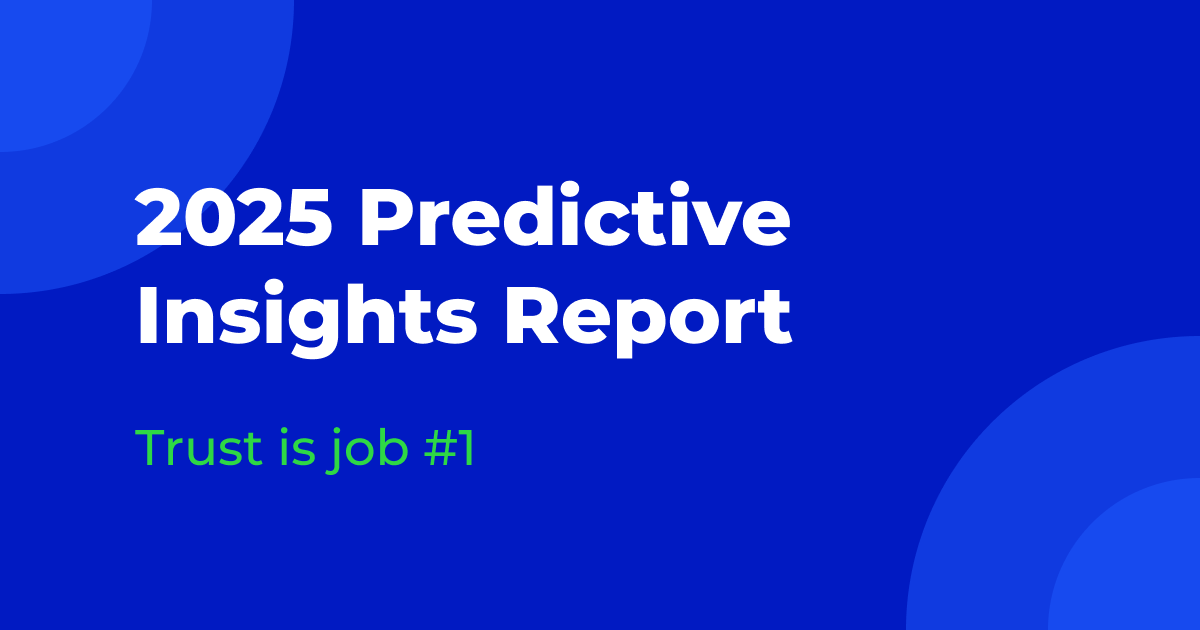
Trust has always been a pillar of strong customer relationships. With 62% of consumers stating that trust is critical when choosing to engage with a brand, it is fast becoming a defining factor for consumer engagement and loyalty. At the same time, the digital landscape is becoming more complex, with AI-generated scams and fraud creating unprecedented challenges. This blog explores the growing importance of trust in the digital world and outlines actionable strategies businesses can implement to meet evolving consumer expectations and position trust as a competitive advantage.
The erosion of trust in digital environments
The digital landscape is becoming increasingly complex, with AI-generated scams and deepfake technologies contributing to a growing sense of unease among consumers. These increasingly sophisticated fraudulent activities make it challenging for individuals to distinguish between authentic and deceptive content, undermining trust across digital platforms. Statistics highlighted in the Telesign 2025 Predictive Insights Report illustrate the growing concern:
- One in three people report they have encountered deepfake scams or manipulated content in the past year.
- Over 50% of C-suite executives anticipate a rise in deepfake attacks targeting financial and accounting data in 2025.
- 40% of U.S. IT professionals rank AI-enhanced attacks as their top security concern.
As bad actors increasingly leverage AI to craft more convincing scams, consumer confidence continues to erode. In response, businesses must take proactive measures to address security concerns and reinforce digital trust.
The consumer perspective
As digital threats evolve, consumers are taking a more proactive approach to their security. Data featured in the Telesign 2025 Predictive Insights Report show a clear shift toward protective measures:
- 67% have reviewed or updated their privacy settings in the past year.
- 68% use multifactor authentication, and 61% rely on password managers.
- 80% welcome added security layers to safeguard their data.
These numbers signal a shift in sentiment—consumers are not just demanding secure experiences; they are willing to tolerate some friction if it means better protection. This proactive stance reflects a broader demand for brands to prioritize security and transparency in their digital interactions. Businesses that align with these expectations will cultivate deeper trust and long-term loyalty.
Action plan for businesses
To align with evolving consumer expectations to mitigate digital threats, brands should consider a multi-layered trust strategy. Key approaches include:
- Seamless, secure, and personalized experiences: Consumers expect security without cumbersome authentication processes. Investing in advanced authentication methods—such as biometrics, silent verification, and push notifications—can help balance safety and user convenience.
- Leveraging AI and behavioral analytics: Real-time fraud detection can identify anomalies without disrupting the customer experience. Behavioral analytics helps detect suspicious activities before they escalate into security breaches.
- Enhancing transparency and communication: Poor communication is the second-leading cause of negative customer experiences. Brands that clearly articulate their security measures and proactively inform customers about potential risks will build stronger and sustained trusted relationships.
The bigger picture: Trust as a competitive advantage
The prioritization of trust extends beyond individual businesses—it has macro and micro-level implications. On a larger scale, industries will see:
- Increased regulatory scrutiny, with governments implementing stricter privacy and security laws.
- Heightened consumer awareness, leading to more pressure on brands to adopt robust security measures.
- More collaboration among businesses, regulators, and cybersecurity experts to create industry-wide trust standards.
At a company level, brands that proactively invest in digital trust will gain a competitive edge. Customers will reward organizations that prioritize their safety with long-term loyalty and engagement.
Trust is job #1
Trust will define digital success in 2025. As AI-powered threats grow more sophisticated, brands must take decisive steps to fortify security and instill consumer confidence. The businesses that get trust right—by integrating seamless security, leveraging insights for fraud prevention, and prioritizing transparency—will set themselves apart in an increasingly skeptical digital world. By proactively addressing security challenges and aligning with consumer expectations, businesses can safeguard their reputation and cultivate lasting customer loyalty.
The pressing question remains: Is your brand prepared to meet the trust challenge in 2025?
Get the full Telesign 2025 Predictive Insights Report here. For more insights on building trust in the digital age, explore Telesign’s Trust Index.



